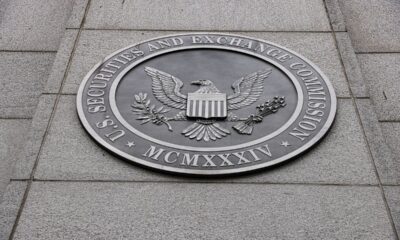Gadgets
Digital price tags can change the cost of groceries 6 times per minute

Shopping for groceries in the United States may soon involve looking at more digital screens. Price tags, traditionally printed on paper using ink for individual items, are gradually being replaced by digital displays. Grocers believe that this transition will increase productivity and potentially lead to lower prices for consumers.
Walmart, the country’s top grocer in terms of sales, has recently announced its plans to expand the use of “digital shelf labels” to 2,300 of its stores nationwide by 2026. This move could introduce millions of consumers to this technology and also incorporate dynamic pricing into the process of purchasing items like bananas and milk.
How do digital shelf labels work?
Digital shelf labels, also known as electronic shelf labels (ESL), are digital price tags that can be adjusted remotely. While these digital tags are common in European grocery stores, they have only started gaining popularity in the US in recent years. Typically, ESLs are small, battery-powered e-paper screens that can communicate wirelessly with a remote server through a local internet network. At Walmart, employees can access and modify the display using a centralized mobile app.
In the future, shoppers at grocery stores will likely interact with ESLs similar to traditional paper tags. The ESL displays a brief description of the product along with its price. These smart tags also feature QR codes that customers can scan with their phones to access additional information about the item, such as its origin, nutritional facts, or price per weight. This additional context can help shoppers make more informed decisions when making purchases.
Grocers like Walmart believe that ESLs will enhance overall productivity and efficiency. Before ESLs, store associates had to manually change price tags weekly to reflect price changes or markdowns. With around 120,000 products in a typical Walmart store, these manual adjustments could be time-consuming. Now, employees can quickly change prices using a mobile app. ESLs offer the capability to adjust prices on thousands of items simultaneously. According to NPR, prices on individual items can fluctuate up to six times per hour with ESLs in place.
“A price change that used to take an associate two days to update now takes only minutes with the new DSL system,” said Daniela Boscan, a Walmart Food & Consumable Team Lead. “This efficiency means we can spend more time assisting customers and less time on repetitive tasks.”
Store associates can also use lights from the ESL to alert them to shelves or areas that need attention. Additionally, workers fulfilling deliveries can quickly locate items with ESLs using their mobile app. This shift to digital shelves could improve the shopping experience and reduce food waste by allowing companies to adjust prices for items nearing their expiration date.
ESLs offer more than just productivity gains; they also enable grocers to implement dynamic pricing strategies. This model allows for price adjustments based on factors like demand, weather, or time of day. Grocers could increase prices for certain items during peak hours or lower prices for items approaching their expiration date. ESLs could lead to better deals for shoppers and help prevent stores from discarding expired products.
“This represents a significant shift in how I, and other store associates, manage pricing, inventory, order fulfillment and customer interactions, ensuring our customers enjoy an even better shopping experience,” added Boscan.
Which grocery stores are using these labels?
While Walmart is not the first US grocery store to experiment with ESLs, its entry into this technology is significant due to its market size. Walmart accounted for 23.6% of all US grocery sales last year, making it the largest grocer in the country. Following a successful trial of ESLs in a location outside Dallas, Walmart plans to expand this pricing practice to 2,300 stores by 2025, potentially reaching millions of consumers.
A recent market study conducted by Incisiv on behalf of Verizon found that over 26% of grocers and general merchandisers had the capability to use ESLs in 2023. However, smaller independent grocers may lag behind larger chains due to the hardware and software requirements needed for “smart shelves.”
ESL are part of a larger trend to bring dynamic pricing to everyday consumer goods
Dynamic pricing, commonly associated with ride-sharing apps like Uber, is expanding to everyday consumer goods. This pricing model has been adopted in industries like airline ticketing and event sales. While some consumers criticize dynamic pricing for leading to higher prices, it can also offer savings during off-peak hours. The introduction of dynamic pricing in the grocery sector may face some resistance from consumers who are concerned about rising grocery prices.
ESLs have the potential to help grocery chains manage inventory more efficiently and offer discounts on items close to their expiration date. Whether businesses use ESLs to benefit consumers or maximize profits remains to be seen.
-

 Destination8 months ago
Destination8 months agoSingapore Airlines CEO set to join board of Air India, BA News, BA
-

 Breaking News10 months ago
Breaking News10 months agoCroatia to reintroduce compulsory military draft as regional tensions soar
-

 Gadgets3 months ago
Gadgets3 months agoSupernatural Season 16 Revival News, Cast, Plot and Release Date
-

 Tech News12 months ago
Tech News12 months agoBangladeshi police agents accused of selling citizens’ personal information on Telegram
-

 Productivity11 months ago
Productivity11 months agoHow Your Contact Center Can Become A Customer Engagement Center
-

 Gadgets3 weeks ago
Gadgets3 weeks agoFallout Season 2 Potential Release Date, Cast, Plot and News
-

 Breaking News10 months ago
Breaking News10 months agoBangladesh crisis: Refaat Ahmed sworn in as Bangladesh’s new chief justice
-

 Toys12 months ago
Toys12 months ago15 of the Best Trike & Tricycles Mums Recommend























